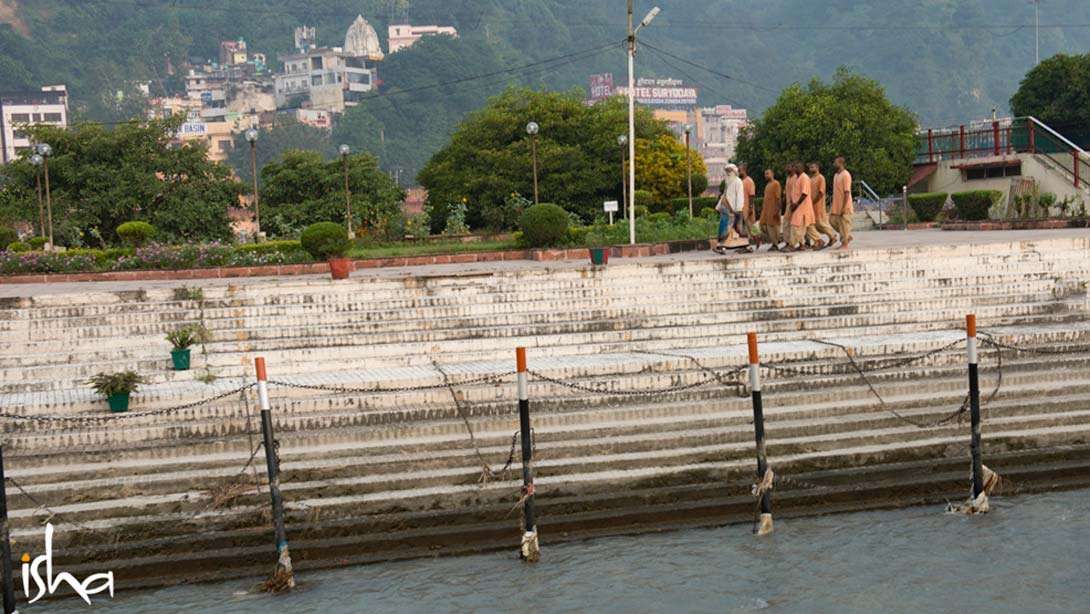Sadhguru on River-Interlinking and Dams
While river inter-linking may be a hot-button political topic in many states, can it really offer a sustainable solution for India’s water woes? Sadhguru discusses the possibilities and pitfalls of this multifaceted issue.

Q: Do you support the proposed projects of river-interlinking and increasing water transport? Will they be beneficial or harmful in the long run?
Sadhguru: Whenever we look to redistribute water, it should be done in a very calibrated way. If it is needed somewhere for flood mitigation, it may have to be done. But thinking that all our problems will be solved if you link rivers is not true.
River-interlinking is based on the assumption that some river basins have “surplus” water supply while others have “deficit”, and by linking them, water supply can be more evenly distributed. From our interactions with scientists, we have learnt that the idea of a “surplus” or “deficit” basin is limited and does not take into consideration varying climatic conditions.
For example, the monsoons have been weakening over the last few decades in various parts of India, and the rainfall in parts of the country is now happening for fewer days and often in very intense spells. The “surplus” basins may, in fact, face water stress due to these changes.
Subscribe
Evaluating Solutions
A few interlinking projects have already rolled out. It would be ideal if we evaluate the economic gains from these projects and weigh them against the loss of natural resource capital before embarking on new projects. There are certain rivers which can be linked, which would be beneficial especially for flood mitigation. But all rivers in India are not fit to be linked because our rivers are not like European or North American rivers. In Europe, for example, the average precipitation is around 100 to 150 days in a year, and they have at least ten to fifteen inches of snow sitting there for two to three months. For us, precipitation is only for around 60 to 70 days in a year, and this is a tropical land that is very thirsty and will drink up water.
Any new proposal for interlinking must strictly be evaluated on the basis of scientific and environmental merit and long-term sustainability, rather than on the basis of emotions and politics. And while assessing potential benefits, in the context of our tropical climate, we should account for the resultant loss of water via evaporation and ground seepage.
In India, rivers are mostly forest-fed. So bringing back the tree cover on either sides of the river is the only long-term sustainable solution to address water scarcity and reduce the impact of floods and droughts.
Q: Rivers' natural flow has also been affected over the years because huge amounts of water are being diverted in canals, for agriculture and industries, etc. What are your thoughts about it?
Sadhguru: Agriculture in India is using up sixty to eighty percent of the water in the rivers. If we look at many other nations that are growing similar crops – with much better yields – they are using much less water.
Our policy recommendation strongly advises a shift to tree-based agriculture practices with implementation of micro-irrigation technologies. If we bring in the right kind of technologies and create the necessary humus on the land, the consumption of water will go down significantly, and that itself will make the river flow.
We must understand that the large dams were built when we were in a survival mode as a nation. In 1947, we were left with a country that had no means to live. The average life expectancy was thirty-two years. There was no industry, business, commerce – everything was destroyed when the British left.
From Survival to Sustainability
For almost fifty years, we have done many desperate things while in survival mode. That happens in the life of a nation. Unfortunately our populations multiplied too rapidly – not necessarily because of reproduction – but simply because the life expectancy improved, which is a wonderful achievement. But from thirty-three crores we came to hundred-and-thirty crores. So the pressure on the land has increased. The land-population ratio is very bad in India. All these are the realities we have to work with.
So for the first fifty years we have been in survival mode. For the last twenty years, we have been in developmental mode. Now, a time has come – the Rally for Rivers is a turning point – where we have to shift to a sustainable mode.
Editor’s Note: Learn More about Rally for Rivers and the Policy Recommendation at RallyforRivers.org



